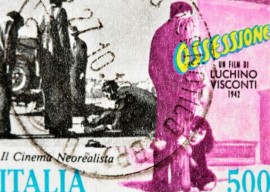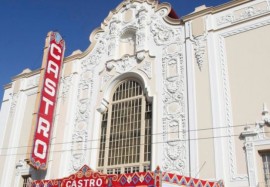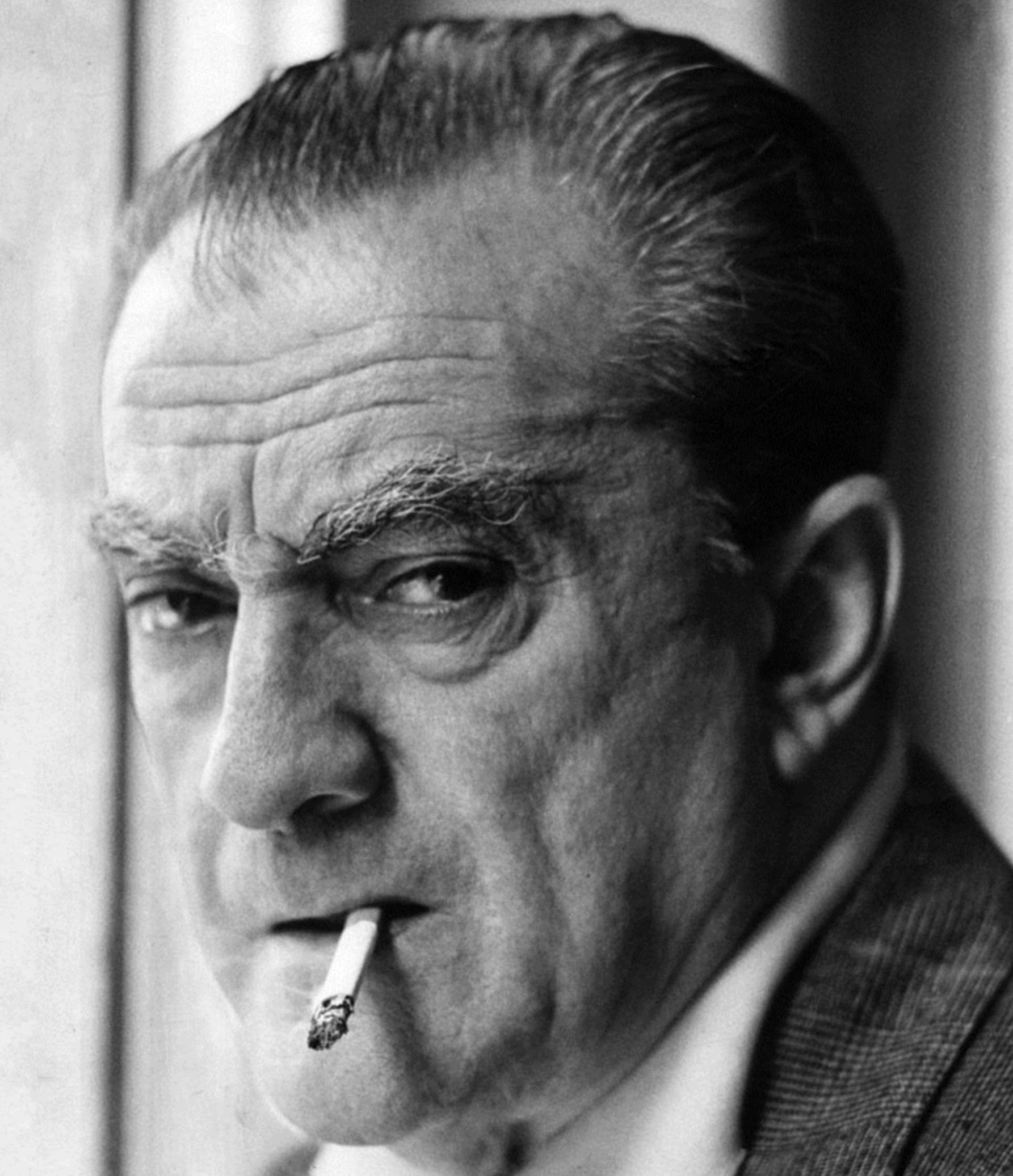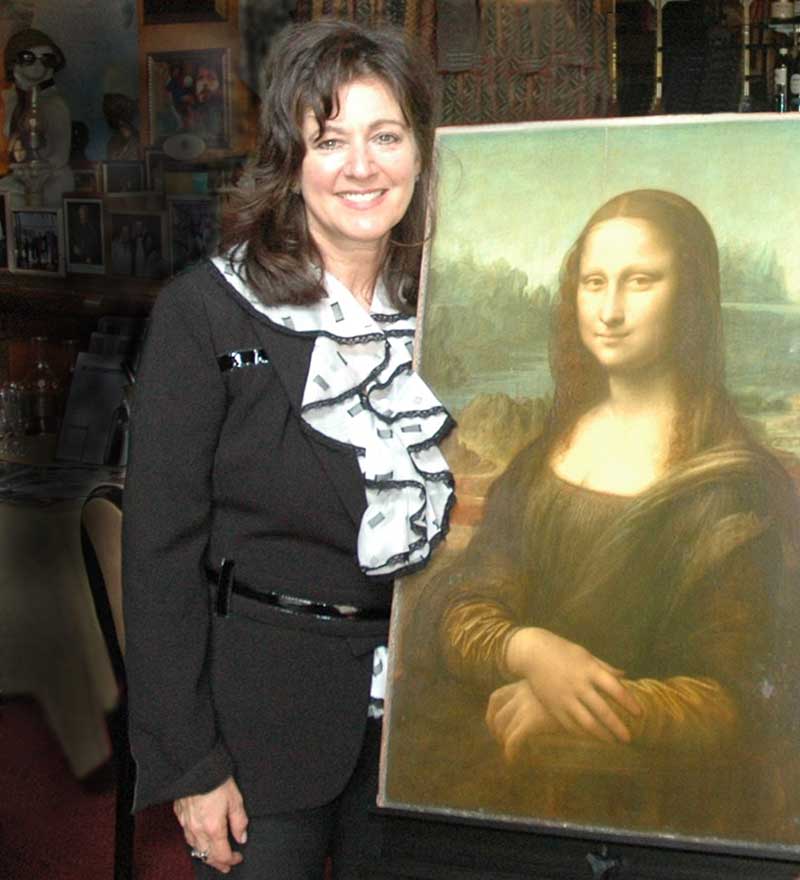Italian film “noir” is coming to San Francisco’s historic Castro Theater. The Noir City-San Francisco Noir Film Festival 2015 began its 13th year on January 15th and will continue through January 25th. Twenty-five classic films are included in the line-up this year. If you are a film noir aficionado this is an event you do not want to miss.
One of the 25 titles is the “chiaroscuro” classic Ossessione. The film is described as a groundbreaking work of Italian neorealism; an earthy adaptation of James M. Cain’s The Postman Always Rings Twice.
Luchino Visconti
Ossessione was banned by Italy’s Fascist government when it was originally released in 1943. At that time, it was believed all prints were destroyed, except for one duplicate negative the director, Luchino Visconti, carefully hid for decades. This is considered by experts to be an extraordinary save of Visconti’s first masterpiece. Ossessione stars Clara Calamai and Massimo Girotti and explores the darker side of intimate relationships.
Please note that the course rawness of this film is intended for mature audiences. It will be presented on Saturday, January 24th at 7:00 p.m. Event details can be found at the end of this article.
The historical context surrounding Ossessione reaches far beyond images on celluloid. Read on to understand why this film is a reflection of the art of Italian filmmaking as a vehicle used to explore life’s darker side.
The term “chiaroscuro” is used to describe high-contrast, black and white film lighting schemes. It is literally the combination of the two Italian words for clear or bright and dark referring to the extreme contrast of light and dark elements in movie scenes.

Some film scholars refer to the painting style of Tenebrism as one of the inspirations for the dramatic illumination in Italian film noir. The word “tenebrism” derives from the Italian, tenebroso (murky), a style of painting using pronounced chiaroscuro, where intense contrasts of light and dark combine and where darkness becomes a dominate feature.
Some point to the work of Italian painter Caravaggio as an early influence in the evolution of film noir. Michelangelo Merisi da Caravaggio (1571-1610) was active in Rome, Naples, Malta and Sicily where he painted a brutally realistic version of the human condition using bold, dramatic colors with unabashed use of light and dark.
During the 1940s, this cinematic style emphasized quasi-documentary authenticity and is considered by film historians to have had considerable influence on the emergence of American film noir. Known as the golden age of Italian cinema, this national film movement was characterized by stories set amongst the poor, working class, filmed on location with content primarily dealing with difficult economic and moral conditions of post-World War II Italy.

Kristin Tompson and David Bordwell explain in their book “Film History: An Introduction”, that after the fall of Mussolini’s fascist government, much of Italy’s social consciousness underwent dramatic change as a more realistic approach was used when making films. Italian cinema went from utilizing elaborate studio sets to shooting on location in the countryside and city streets in the realist style.
Most film historians point to neorealist style as a result of collaboration between Luchino Visconti, Gianni Puccini, Cesare Zavattini, Giuseppe De Santis and Pietro Ingrao as a response to the repressive political climate in 1940s Italy. The first neorealist film is thought to be Visconti’s Ossessione (1943) while neorealism became a worldwide genre in 1946 with the release of Roberto Rossellini’s Rome, Open City, when it won the Grand Prize at the Cannes Film Festival as the first major film produced in Italy after World War II.
Visconti was born Luchino Visconti di Modrone, Count of Lonate Pozzolo, on November 2, 1906, in Milan. He died in Rome on March 17, 1976. He is best known as an Italian theatre, opera and cinema director, as well as a screenwriter. Two of his more well-known films are The Leopard (1963) and Death in Venice (1971). Visconti’s filmmaking career began as an assistant to French film director Jean Renoir and with the mentoring of friends CoCo Chanel and Burt Lancaster he continued working until his death at the age of 69.
As alluded to earlier, Ossessione’s film history is certainly not without considered controversy. When it was completed and released in 1943, it took government authorities by surprise. After several screenings in Rome and northern Italy, outraged Fascist and Church authorities banned the film and made radical attempts to destroy all copies, or so they thought. Visconti managed to keep a duplicate negative from which all existing prints have been made. The film also encountered distribution problems in the United States. And so it went until 1976 when the film was released outside of Italy.
Italian Neo-Realism films are considered by many to be the most important of the early movements and a major player in the alternative to Hollywood’s glamorous representations of American life after World War II.
This new way of making films was not simply a matter of lighting schemes. It was a direct reflection of the moral and political climate emerging out of Italy’s experience with fascist dictatorship, war, military occupations and economic hardship.
Neo-realism provided an avenue of creative self-expression in film that was an authentic representation of life at the most base, raw level, films that were unadulterated representations of reality achieved by stark lighting, favoring scenes shot on location, and often the use of non-professional actors. By the 1950s, the political climate shifted dramatically. Due to an economic upswing and rising income levels, Italians began to favor more optimistic portrayals in film. Poverty and despair was no longer “in vogue” as the human condition began to improve.
The opportunity to view a once banned, controversial, landmark Italian film in the San Francisco Bay Area does not occur often and is all the more reason to seize the opportunity to see Ossessione at the San Francisco Film Noir Festival. See details below.
Date: Saturday, January 24, 2015
Time: 7:00 p.m.
Location: Castro Theater – 429 Castro Street, San Francisco
Ticket Information: Tickets can be purchased at the box office on the day of the show or at www.brownpapertickets.com/event/1053904.
San Francisco Film Noir Festival Website: www. noircity.com































